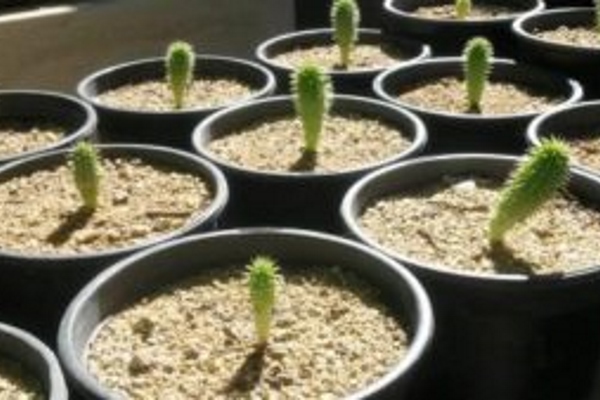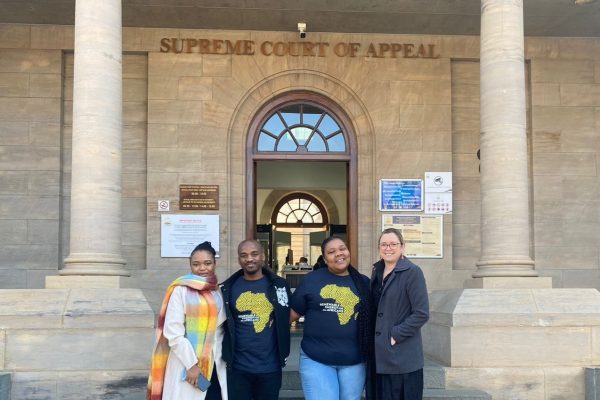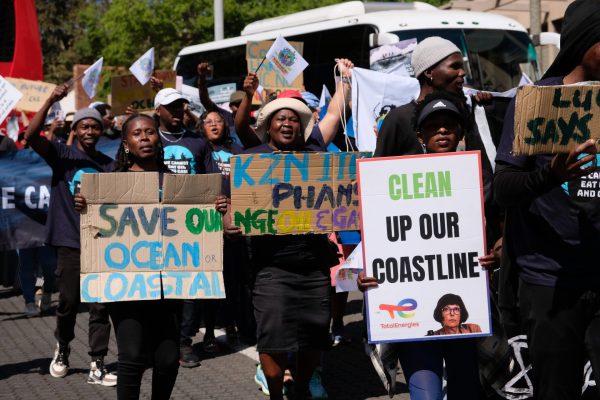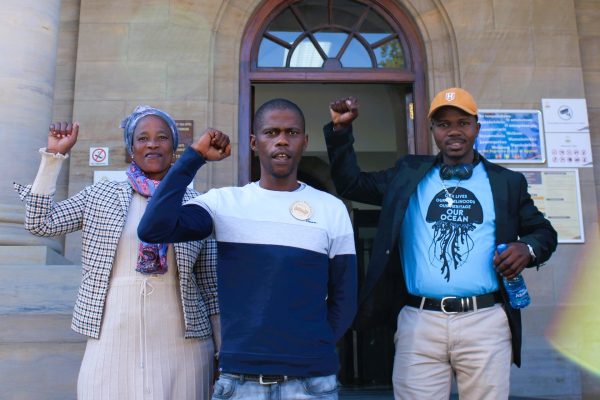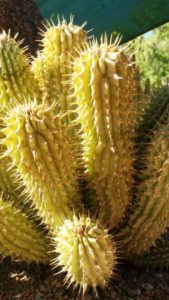
Guest Blog by Dr. Laura A. Foster
Dr. Laura Foster recently led a seminar with Natural Justice regarding her newly published article titled “The Making and Unmaking of Patent Ownership: Technicalities, Materialities, and Subjectivities” regarding issues of indigenous peoples’ knowledge, patent ownership and benefit sharing. The seminar sparked an informative discussion on how the assumptions and rules of patent ownership are designed to value certain forms of knowledge production over others, namely that of knowledge produced in a lab over that of indigenous peoples knowledge. Foster stressed the importance of also examining how knowledge produced by scientists in the lab and indigenous peoples in the Kalahari are in fact similar rather than different. An abstract and excerpt from her new article is featured here.
Abstract
Feminist sociolegal studies have recently taken up the technicalities of doctrines, documents, and regulations to better understand the law. In an affiliated move, feminist science studies turned to the materialities of theories, practices, and nonhuman organisms to make critical sense of science. These methodological turns focus not on gender, per se, but on precise mechanisms of law and science that structure, reinforce, and reconfigure power and inequality. Drawing on these methodological approaches, this article attends to the technicalities and materialities of patent ownership and benefit sharing in South Africa in regards to San peoples’ struggles over the patenting of the Hoodia gordonii plant. An examination of patent documents, benefit-sharing agreements, legislative appendixes, and the biology of plants generates an understanding of how patent ownership, rather than being natural or value-neutral, is a historical and sociocultural process shaping, refashioning, and being inscribed across multiple scales of nation-state jurisdictions, divergent ways of knowing, and biochemical orderings of plants.
Excerpt
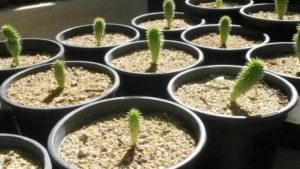
Scientists with the South African Center for Scientific and Industrial Research (CSIR) obtained a provisional patent in 1997 related to the Hoodia gordonii plant, which they found to be responsible for suppressing appetite.
The patenting of Hoodia properties, officially granted in 1999, incited a network of actors as the plant was poised to become the next blockbuster weight-loss drug. CSIR scientists collaborated with the UK biotechnology firm Phytopharm and the global pharmaceutical company Pfizer, and eventually with Unilever, to develop Hoodia-based products for the growing “obesity epidemic” in the United States. Angered over the patenting of Hoodia, indigenous San peoples mobilized against CSIR and its commercial partners, accusing them of stealing their knowledge without prior informed consent (Barnett 2001; Wynberg 2004). San claimed historical discovery of the plant they referred to as !Khoba as a source of water and energy when food supplies were low. Their knowledge of the plant’s properties and uses in conditions of scarcity was now being appropriated to treat obesity. San’s collective organizing led to the signing of a benefit sharing agreement in 2003, whereby CSIR agreed to give San peoples 6 percent of their royalty income from future Hoodia sales and 8 percent of milestone payments.
My own ethnographic research into Hoodia arose when San-CSIR benefit sharing seemingly faltered. Unilever dropped the project in late 2008, casting doubt over the promise of Hoodia-based products and monies to San. Legal uncertainty also ensued with the adoption of the Bio-Prospecting, Access and Benefit-Sharing Regulations in 2008 (hereafter, BABS Regulations). Despite this uncertainty, Khomani San I spoke with considered benefit sharing to be a success because it brought recognition to San peoples. Benefit sharing simultaneously recognized two divergent ways of understanding Hoodia – one emanating from San and the other from CSIR researchers. The mechanisms underlying this recognition, however, remain unexamined. Several accounts have produced valuable histories of San struggles over the patenting of Hoodia and subsequent benefit-sharing negotiations (Comaroff and Comaroff 2009; Vermeylen 2008; Wynberg, Schroeder, and Chennells 2009). Delving into the technicalities and materialities relevant to these struggles, however, provides additional insights into how patent ownership and benefit sharing become sites for the fashioning (and unfashioning) of human and nonhuman subjects, albeit in limited and unequal ways.
In particular, I examine the technicalities of two Hoodia patent documents, the San-CSIR benefit-sharing agreement, and a South African legislative appendix governing benefit sharing to understand how patent ownership is constituted. To guide my analysis, I draw upon a recent turn in feminist sociolegal studies toward the technical and everyday details of law to understand how hierarchies of power and knowledge are produced and contested (Riles 2005; Valverde 2009). For instance, I find that the Hoodia invention and its scope of patent ownership differ in South Africa versus the United States. Through this analysis, patent ownership emerges not as a Lockean natural property right, but as a contingent and historical process.
Furthermore, I analyze how patents involve the making of both human and nonhuman subjects. While feminist sociolegal studies turn to technicalities, feminist science studies takes up the materialities of human and nonhuman matter. Attention is placed not only on the discursive representations of humans and nonhumans, but also on how the unpredictability of their biologies and materialities provoke their discursive constraints (Alaimo 2011; Barad 2007; Bennett 2010; Coole and Frost 2010). Considering the biochemistry of the plant, I show how Hoodia patent ownership and benefit sharing become sites for the interrelated engendering of both San and Hoodia. The liveliness of the plant inscribes San agency and conditions of law, and vice versa. In the end, I argue that patent ownership and benefit sharing are contingent scalar processes; as such, they are best understood through attention to scale, specificity, and the making of human and nonhuman subjects that are co-constituted by and against the law
Citation
- This excerpt can be cited as follows: PoLAR: Political and Legal Anthropology Review, Vol. 39, Number 1, pps. 127-143.
- The full text of the article can be found at http://onlinelibrary.wiley.com/doi/10.1111/plar.12135/abstract
- Dr. Laura Foster is Assistant Professor of Gender Studies at Indiana University, where she is also Affiliate Faculty in the IU Maurer School of Law and African Studies Program. She is also a Senior Research Associate in the Intellectual Property Unit at University of Cape Town Faculty of Law. Her current book project examines how contestations over patent ownership rights, Indigenous San knowledge, and Hoodia plants in South Africa present emerging sites of struggle over who does and does not belong.

